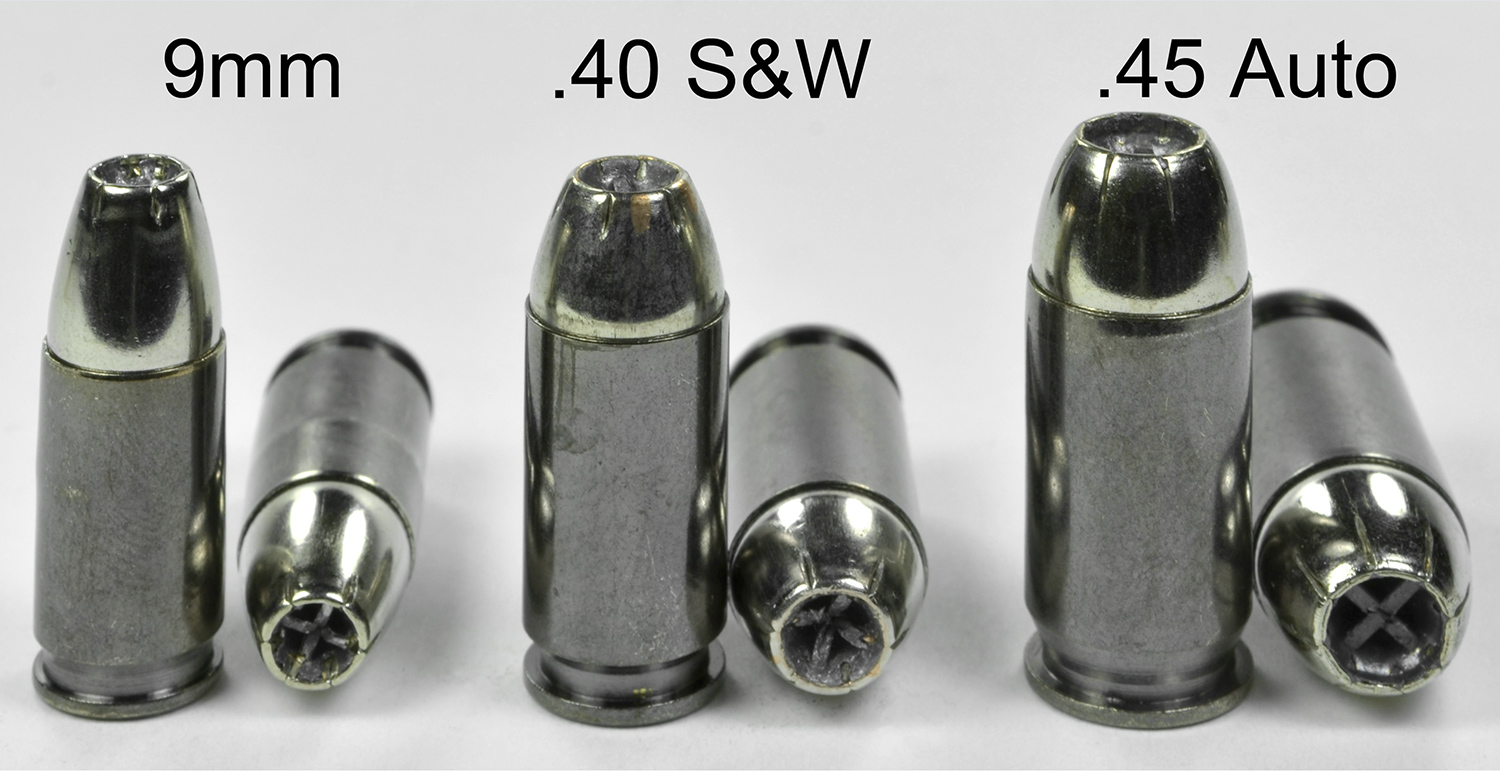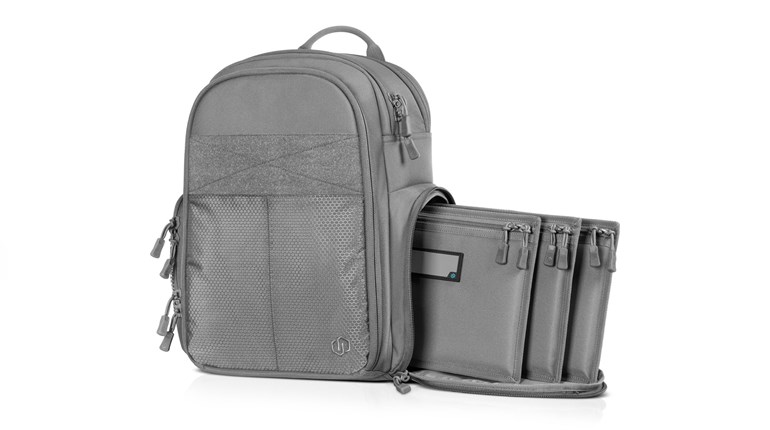
Browning recently introduced its own line of ammunition for handguns, rifles and shotguns for hunting, personal defense and target shooting. Their line even includes rimfire ammunition. For centerfire handguns, they offer .380 Auto, 9mm Luger, .40 S&W and .45 Auto loads.
They have three lines of centerfire pistol ammunition. The BXP (Browning X-Point) personal defense round has a silver-color jacketed hollow point bullet with a new design. The X-Point is an X-crossed nose that is slightly countersunk within the jacket for protection through intermediate barriers. All BXP rounds are loaded in slippery black nickel plated cases to assist in reliable functioning. The cases are made from brass and boxer primed. The bullets are 95-grain in the .380, 147-grain in the 9mm, 180-grain in the .40 S&W, and 230-grain in the .45, and are sold 20 rounds per box.

The BPT (Browning Performance Target) line is a full metal jacket target load that uses the same weight bullets as their BXP line and are loaded in the same black nickel plated cases. BPT bullets produce the same velocity as the BXP bullets so they will have the same feel as the defensive ammo. The BPT’s are sold in 50 round boxes.

The third line is Browning’s Training and Practice FMJ. These bullets are loaded in traditional brass colored cases with gilding metal copper jackets and offer 95-grain bullets in the .380, 115-grain bullets in the 9mm, 165-grain bullets in the .40 S&W, and 185-grain bullets in the .45. The one exception to jacket material is the 185-grain .45 bullet which has a brass jacket. Something to note: I don’t have any .380 Browning ammunition in my possession, so I’m speculating that their components are the same as the other calibers. The Training and Practice line, like the BPTs, are sold in 50 round boxes.

I tested 9mm, .40 S&W and .45 Auto loads for velocity and accuracy at 25 yards. The guns were fired from a Ransom Rest with 10-shot (BXP) and 15-shot groups (BPT and Training and Practice). Velocity was recorded with a Shooting Chrony chronograph at about 10 feet.
The test guns were a 9mm 1911-type pistol with a Para Ordnance frame, a Caspian slide and a 5-inch Kart barrel, a .40 S&W Para Ordnance with a 5-inch Ed Brown barrel, and a .45 Automatic Caspian with a 5-inch Kart barrel.
The ammunition was close to its published velocities, some a little faster, some a little slower, which is the usual result when comparing the same ammo in different barrels or from different lot numbers.

Accuracy was pretty consistent among all the ammunition tested, producing 10- and 15-shot groups in the range of three inches. This is typical of most factory ammunition through most handguns at 25 yards. The exceptions were the 147-grain 9mm BXP and BPT bullets which produced some very nice groups hovering around 1.5-inches. That’s better than average and is always welcome in a factory load.
The .45 Auto Training and Practice load, with a 185-grain bullet at about the same velocity as their 230-grain offering, should produce noticeably less recoil. I appreciate less recoil since it often means a more pleasurable time at the range during practice sessions. Full power recoil has its place when you want to emulate the feel of your defensive load, and the BPT round offers that. But sometimes you want less recoil, and it’s nice that Browning offers that in their .45 Training and Practice line.
The BXP bullets were fired into 6-inch wide plastic water jugs to examine expansion. Water jugs are not the same as ballistic gelatin, so their performance should not be compared directly. But they are not without use and give some impression of a bullet’s performance. These rounds were chronographed about 10 feet in front of the water jugs.

The 9mm and .45 caliber BXP bullets stopped in the fourth jug, and the .40 caliber bullet stopped in the third jug. All bullets showed extensive, albeit uneven, expansion. The 9mm bullet expanded to 177 percent of its original diameter and shed about 2 percent of its weight. The .40 bullet expanded to 197 percent of its original diameter and shed about four percent of its weight.
The .45 caliber bullet shed its jacket in the middle of its travel. A fragment of the jacket was found in the second jug, and the remainder of the jacket was in the third jug. The lead core found in the fourth jug weighed 197.6-grains, losing 14 percent of its original intact weight. It expanded to about 188 percent of its original diameter.

The new Browning ammunition is a fine product. It feeds reliably and offers caliber-typical velocity and good accuracy. Three different product lines provide shooters with a wide selection for various applications. The BXP jacketed defense bullets expanded to nearly twice their original diameter and showed deep penetration in the water jugs. I look forward to seeing these bullets tested in ballistic gel.

































